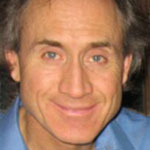Acute Adverse Effects of Therapeutic Doses of Psilocybin: A Systematic Review and Meta-Analysis
Variability across undesired and beneficial sleep changes warrants further investigation. There was no indication for a higher risk of EMT seeking in people with lifetimemental health diagnoses. Previous research has suggested associations betweenserious adverse reactions to psychedelics and presence of mental health conditions;however, it is possible the risk is less pronounced in common mental healthconditions compared to psychotic or bipolar disorders (Cohen, 1960; Strassman, 1984). People who use psychedelics are a self-selective group and someindividuals with certain predispositions may instinctively know not to takepsychedelics or to use them with more care, therefore, making it more difficult tofind predictors of effects from naturalistic use.
Data Sources
- In experimental settings, withcomprehensive participant screenings, carefully measured doses and supporting dosingenvironments, adverse reactions are indeed rare and outcomes generally positive(Rucker et al.,2018).
- Individuals living with a diagnosis of BD may experience challenges with emotion regulation and processing as a part of this condition 62; our findings suggest further investigation in the area of increased emotion processing during psilocybin experiences as a key change process in relation to symptom changes.
- There was a concern over anorexic cognitions returning a few months after dosing, given that she reported ‘having an internal voice that told her what she could and couldn’t eat’, which was easier to ignore with the higher dose of quetiapine (these were not hallucinations).
- Sensitivity analysis was conducted by sequentially removing 1 study at a time to assess the robustness of our results.
- That generally favourable outcomes were observed across predictors does not necessarily indicate those predictors matter little, but rather that different things may work for different individuals.
Although a recent meta-analysis focused on dose-dependent response did not report dizziness as an adverse effect of psilocybin,8 our analysis found it statistically significant. Two studies identified dizziness as an adverse effect.11,19 One study reported 6% dizziness with high-dose psilocybin, 1% with moderate dose and none with low dose.11 The other study reported 8% of participants with dizziness after administration of psilocybin.19 Both studies stated dizziness resolved between 24 and 48 hours. Neither study used any medication to treat dizziness, and both reported it was a nonserious adverse effect. Similar to their interventions with other adverse effects, the role a therapist has in managing dizziness (eg, asking patients to lie down, encouraging them to trust the experience) is also unknown. Some protocols state that a patient should lie down with eye coverings,11,16,17,19 and therefore such measures may be enough to decrease the severity of the dizziness and avoid requiring any medications. Studies with ayahuasca, especially clinical investigations, have generally focused on quantitative measures of psychological characteristics.
It is possible that these core features of psychedelic experience can be measured by specific questionnaires. For instance, psychometric analysis indicates that the 5D-ASC questionnaire37 has a factor linked to Vigilance Reduction (VIR), which may capture phenomena described in Cluster 1, containing words such as “sleep”, “slow”, “nap”, and “dream”. Similarly, Cluster 4 has words such as “music”, “speak”, “listen”, “sound”, “silence”, and “voice” that are potentially related to a factor measuring Auditive Alteration (AVE). Future studies should explore the relationship between psychometric scales and verbal reports of experiences, trying to identify to which extent common dimensions of the psychedelic experience are assessed by existing instruments, leading to their refinement and development of new measurements. In a recent study by Carbonaro et al. 14, 10.7% of users reported that, under psilocybin, they placed themselves or others at risk of physical damage; 2.6% reported being violent or physically aggressive with themselves or others, and 2.7% reported having sought help in a hospital or emergency room. Regarding mental health outcomes, significant associations between the consumption of hallucinogens throughout life and mood, anxiety, personality, eating and substance abuse disorders were found in an epidemiological study 15.
Difficulty relaxing or sleeping after their drug experiences led some participants to experience worsening of symptoms, which at times presented as hypo/mania or distressing sensory experiences that led some participants to become hospitalized. Another aspect to be highlighted is the limitations of quantitative methodology in capturing longitudinal change. A change in job, a focus on physical exercise and looking after her health, an increased awareness of her internal state and, above all, small daily changes in self-care all clearly show a significant impact on her day-to-day life, despite this not being reflected in her mood rating scale scores. The same concept applies to adverse events, which are not completely captured using quantitative methods.
- This may be linked to characteristics of setting, with the current study being conducted in a university hospital, as opposed to previous investigations that took place in ritualistic19 or psychotherapy settings24.
- As this is a single case report, no conclusions can be drawn, and further assessment is required to understand this phenomenon.
- Psilocybin is a naturally occurring compound found in a variety of mushroom species (sometimes referred to as “magic mushrooms”) 17.
- The purpose of the survey is to capture drug consumption experiences from people who use drugs including sentinel drug using populations allowing the early detection of new drug trends and practices before they reach the general population.
following the use of magic mushrooms
Additionally, for each study, a funnel plot was created to evaluate publication bias. Study quality was assessed by the risk-of-bias tool for randomized trials (RoB2).14 Two of us (A.Y. and N.M.M.A.B) determined initial RoB2 scores for the included studies. An additional 2 of us (J.C. and J.E.T.) then independently assessed and verified initial scores. In this meta-analysis, the acute adverse effect profile of therapeutic single-dose psilocybin appeared to be tolerable and resolved within 48 hours. However, future studies need to more actively evaluate the appropriate management of adverse effects.
Pre-psilocybin sleep deprivation
The inverse variance method with the Hartung-Knapp adjustment for the random-effects model was used, with a continuity correction of 0.5 for studies with 0 cell frequencies. Sensitivity analysis was conducted by sequentially removing 1 study at a time to assess the robustness of the results. Two researchers conducted the interviews, which were carried out right after the end of the acute effects of ayahuasca. Interviews had an average duration of 13.7 min and started with an open-ended question (“Can you please freely describe your experience?”). When participants gave brief answers, or when further clarification was needed, they were probed with follow-up questions (e.g. “I saw a person” “Was that person known to you? Can you please provide more details?”).
She was offered the first of three additional integration sessions which were spread across the rest of the study and a handover was given to the local crisis team for support if required. Four days post-dosing, Zakara contacted the team reporting a significant deterioration in her mood, reporting it was ‘the worst she’d ever felt’. She was experiencing panic attacks, disrupted sleep and an inability to eat due to persistent nausea. She was also struggling with an increase in her suicidal thoughts, with some intent to act on them, although this fluctuated. She had impulses to go to the train tracks near her home, which she did, but only so ‘her brain would shut up’, as she was having thoughts of wanting to go. Zakara made it clear at the time that she had no intent of taking her life when she visited the tracks.
The textual analysis, which congregate words repeated with high frequency during the participants’ reports describing the experience, identified five clusters. Broadly speaking these clusters refer to experiencing an altered state of consciousness, encompassing cognitive changes, somatic alterations, auditory experiences, and visual perceptual content. Each of these clusters showed specific associations with sociodemographic (e.g. age, gender, income, marital status) or clinical variables (depression diagnosis, substance use), but effect sizes were generally small. Considering this, the current study explores the subjective experience of people with depressive and healthy controls who consumed ayahuasca. Specifically, a subsample of participants from the Palhano-Fontes et al.12 study answered open-ended questions about their experience with ayahuasca, with these data undergoing textual analysis.
Authors
Such occurrences probably include the need for medical attention, detention by the police force, need for parental help, etc, also requiring transportation, as indicated by words that refer to the process of getting ready, leaving some place, means of transportation, among others. Psilocybin has been studied in the treatment of depression and anxiety disorders. Clinical studies have mainly focused on efficacy, with systematic reviews showing favorable efficacy; however, none have primarily focused on psilocybin safety. In the last three decades, research on psychedelics has been conducted mostly in developed regions and high-income countries26.
Observation of the MCA factor map (Supplementary Figure S1) showed that frequently reportedanxiety/panic and paranoia/suspiciousness were very closely related, as wereseeing/hearing things and extreme agitation. Furthermore, palpitations,overheating, self-harm and difficulty breathing tended to co-occur. A fourthcluster identified showed an association between symptoms such as passing out,seizures, sweating, confusion, memory loss and very low mood afterwards. For all statistical analyses, complete case analysis was used, that is, responseswith missing data on the variables of interest were excluded from thoseanalyses. Growing numbers of people are using psychedelics for personal psychotherapy outside clinical settings, but research on such use is scarce. In addition to point-by-point replies to the reviewers (please see the response to reviewers file, at the end of the submission), we updated the files names according to the journal guidelines and removed funding information from the acknowledgements.
Findings from a thematic categorical analysis approach by Fernández et al.22 suggest that clinical and non-clinical groups may experience the subjective effects of ayahuasca in different ways. Clinical population reports had content such as biographical review, insights and experiences of emotions or death that may have high therapeutic value, while the content of healthy subjects was more related to thoughts about human culture, religion, and philosophy. Loizaga-Velder and Verres23 exploratory study suggests that ayahuasca may assist people with substance-abuse disorder to overcome psychological issues, for instance with higher integration of bodily and mental experience. Thus, exploring further self-reported negative outcomes of psilocybin users: a quantitative textual analysis pmc how clinical and non-clinical groups respond to ayahuasca may bring important information for therapeutic approaches. Context plays an important part in psilocybin therapy,28 and a significant aspect of this is preparation. It is therefore recommended that managing expectation and providing information on possible outcomes following psilocybin therapy is well covered in the preparation phase.
Middle-aged participants showed a significant association with this cluster, with a small effect size, which may suggest more marked consciousness alterations in naïve older participants, but without further data that remains speculative. At the start of the survey a wide range of demographical information wascollected. In subsequent sections, participants were asked to indicate when theylast used specific drugs from an extensive list of substances including magicmushrooms (never, in the last 30?days, between 31?days and 12?months ago, morethan 12?months ago). Those indicating history of use with a drug were thenredirected to sections with in-depth questions about the use of thesesubstances. Although our 17-item outcome scale demonstrated high internal consistency, the assumptions of Cronbach’s alpha are often violated and other tests would ideally be run to for instance examine the factor loadings of each item (Agbo, 2010; Tavakol and Dennick, 2011).




